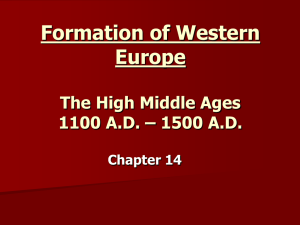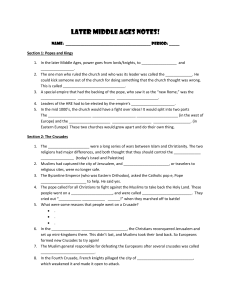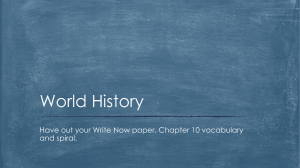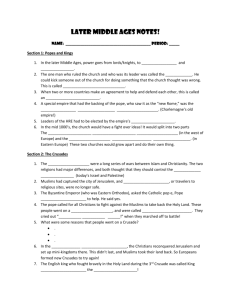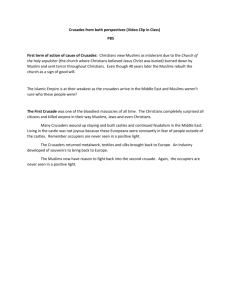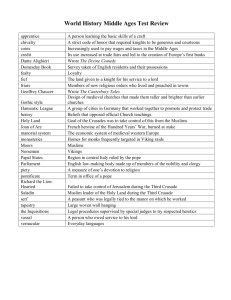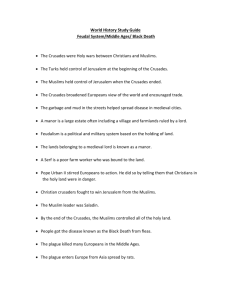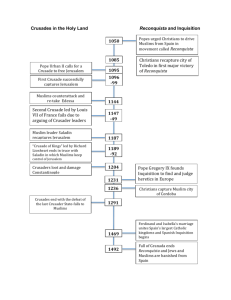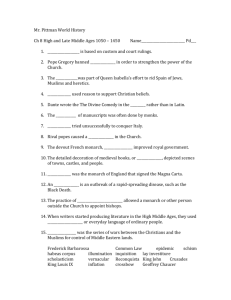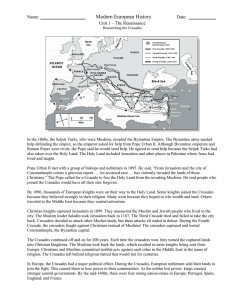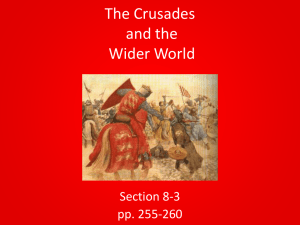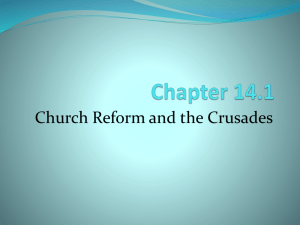Council Rock High School SOUTH
advertisement
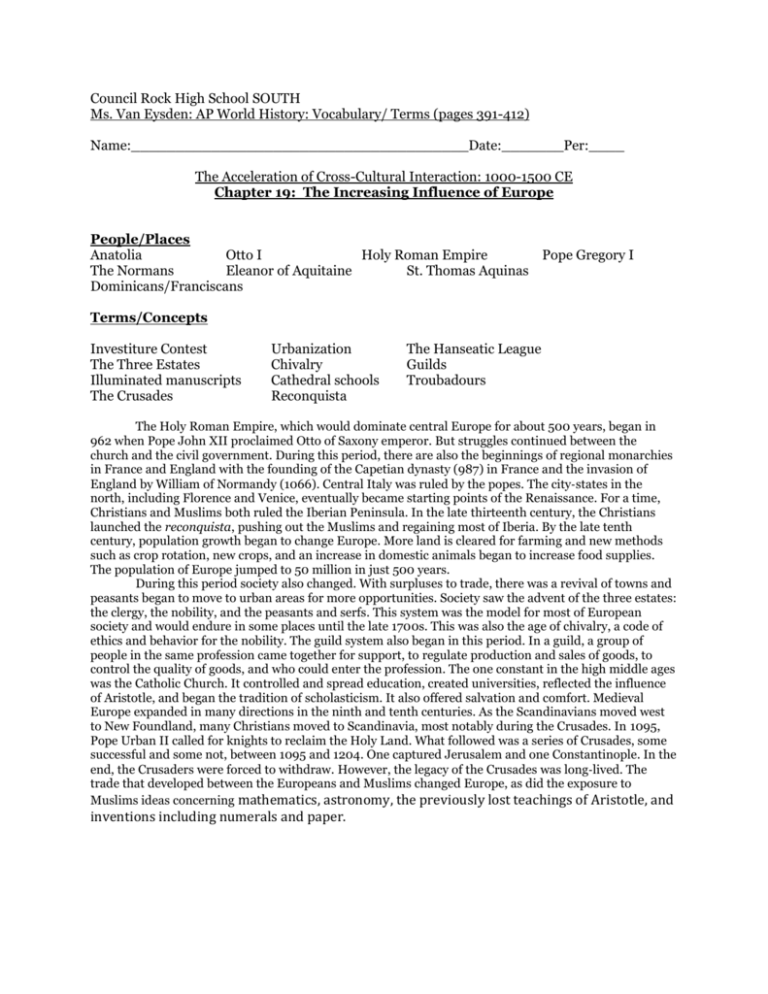
Council Rock High School SOUTH Ms. Van Eysden: AP World History: Vocabulary/ Terms (pages 391-412) Name:______________________________________Date:_______Per:____ The Acceleration of Cross-Cultural Interaction: 1000-1500 CE Chapter 19: The Increasing Influence of Europe People/Places Anatolia Otto I Holy Roman Empire Pope Gregory I The Normans Eleanor of Aquitaine St. Thomas Aquinas Dominicans/Franciscans Terms/Concepts Investiture Contest The Three Estates Illuminated manuscripts The Crusades Urbanization Chivalry Cathedral schools Reconquista The Hanseatic League Guilds Troubadours The Holy Roman Empire, which would dominate central Europe for about 500 years, began in 962 when Pope John XII proclaimed Otto of Saxony emperor. But struggles continued between the church and the civil government. During this period, there are also the beginnings of regional monarchies in France and England with the founding of the Capetian dynasty (987) in France and the invasion of England by William of Normandy (1066). Central Italy was ruled by the popes. The city‐states in the north, including Florence and Venice, eventually became starting points of the Renaissance. For a time, Christians and Muslims both ruled the Iberian Peninsula. In the late thirteenth century, the Christians launched the reconquista, pushing out the Muslims and regaining most of Iberia. By the late tenth century, population growth began to change Europe. More land is cleared for farming and new methods such as crop rotation, new crops, and an increase in domestic animals began to increase food supplies. The population of Europe jumped to 50 million in just 500 years. During this period society also changed. With surpluses to trade, there was a revival of towns and peasants began to move to urban areas for more opportunities. Society saw the advent of the three estates: the clergy, the nobility, and the peasants and serfs. This system was the model for most of European society and would endure in some places until the late 1700s. This was also the age of chivalry, a code of ethics and behavior for the nobility. The guild system also began in this period. In a guild, a group of people in the same profession came together for support, to regulate production and sales of goods, to control the quality of goods, and who could enter the profession. The one constant in the high middle ages was the Catholic Church. It controlled and spread education, created universities, reflected the influence of Aristotle, and began the tradition of scholasticism. It also offered salvation and comfort. Medieval Europe expanded in many directions in the ninth and tenth centuries. As the Scandinavians moved west to New Foundland, many Christians moved to Scandinavia, most notably during the Crusades. In 1095, Pope Urban II called for knights to reclaim the Holy Land. What followed was a series of Crusades, some successful and some not, between 1095 and 1204. One captured Jerusalem and one Constantinople. In the end, the Crusaders were forced to withdraw. However, the legacy of the Crusades was long‐lived. The trade that developed between the Europeans and Muslims changed Europe, as did the exposure to Muslims ideas concerning mathematics, astronomy, the previously lost teachings of Aristotle, and inventions including numerals and paper.
